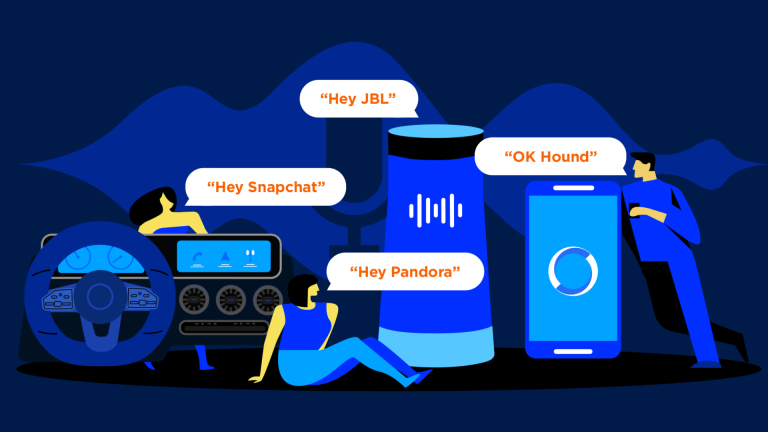While this was true when chatbots were the primary AI interface between sales agents, contact centers, and help centers, it’s not longer the case. The term conversational intelligence is evolving along with voice AI technology to signify the machine learning component of voice AI.
The same technology that began using AI, machine learning, and natural language processing technology to draw meaning from unstructured data to answer questions and enhance customer support is now responding to voice input and responding as a human would in applications both inside and outside of the call center or customer support application.
Voice assistant
Now that we’ve parsed the meanings between voice AI and conversational AI, we can move on to the variations of voice, beginning with voice assistant. A voice assistant is the actual interface between the device and the user.
Originally associated with the in-home speakers developed by the big tech players, the term voice assistant is now used more generically to describe the anthropomorphized “person” that greets you when you wake up a voice-enabled device.
According to Slang Labs, “Voice Assistant is a virtual assistant that uses speech recognition, natural language processing and speech synthesis to take actions to help its users. These assistants have evolved quickly and can perform several complex tasks today.”
While big tech is primarily focused on voice assistants in smart speakers, companies across industries are implementing wholly-owned voice assistants to voice-enable a wide range of devices, services, and apps.
A voice assistant can also be referred to as a voice interface or voice user interface. These terms are considered interchangeable and can be used to describe the same entity.
Voice experience
A voice experience—whether good or bad—is the result of the interaction between the user and the voice assistant. For example, the voice experience is often improved by the availability of certain voice AI technologies, such as context-aware or voice ID. For brands and developers, the goal of implementing a voice assistant or partnering with a voice AI platform provider may be to design an exceptional voice experience that will lead to greater customer loyalty and brand satisfaction.
In summary, as voice AI technology evolves, terms like conversational AI, conversational intelligence, and voice AI will continue to morph into terms that describe a variety of voice experiences. Regardless of how any one voice AI solution is named or described, the keys to a voice AI solution that will solve today’s challenges and lead your company into the future remain the same:
- Branded voice experiences
- Ownership of the customer experience
- Data insights and transparency
- Customizable solutions
Want more breakdowns of voice AI technology? Check out the following:
At SoundHound, we have all the tools and expertise needed to create custom voice assistants and a consistent brand voice. Explore SoundHound’s independent voice AI platform at SoundHound.com or speak with an expert or request a demo below.









